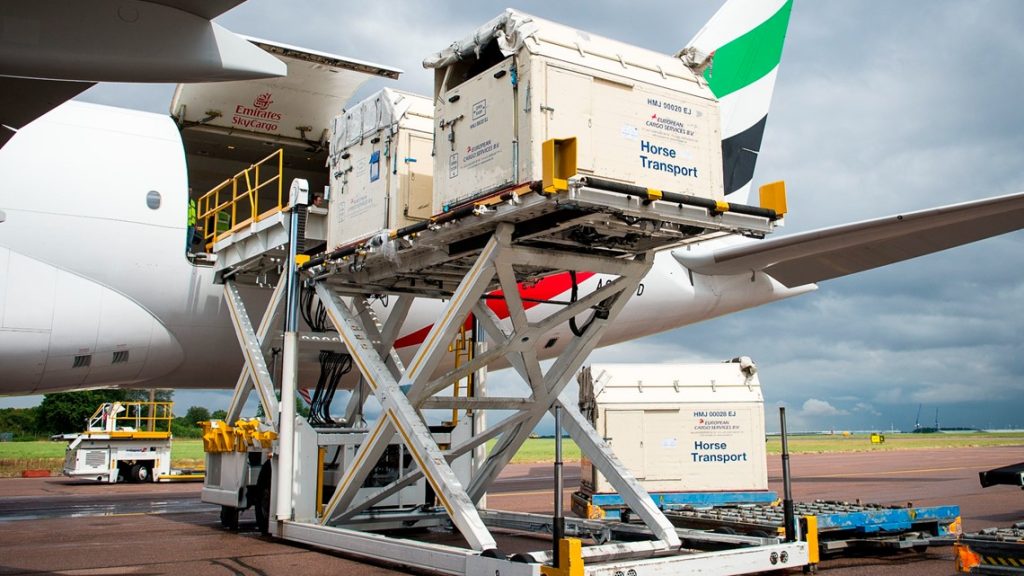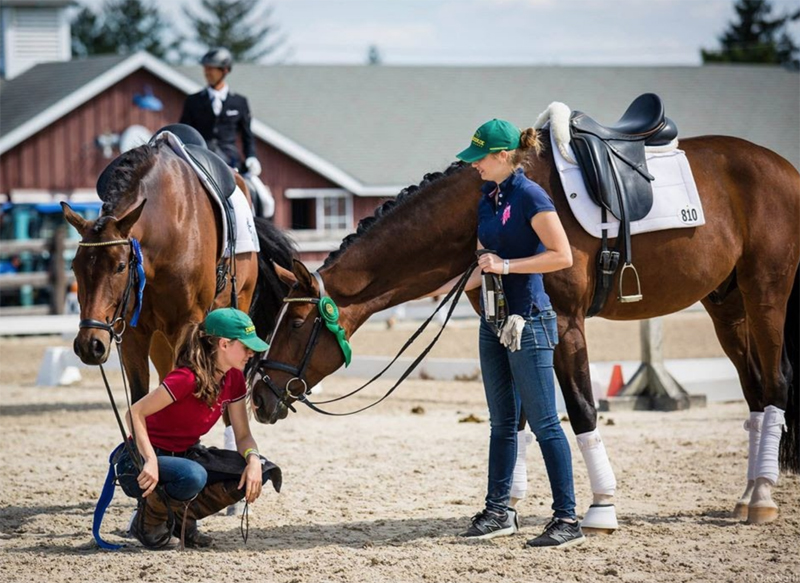Equestrian horses get to the Olympics through a detailed and careful process. This journey involves selection, training, and strict regulations.
Equestrian sports are a highlight of the Olympic Games. But how do these majestic horses make it to this world stage? The process is complex and requires a lot of dedication. Horses must qualify through rigorous competitions. They undergo intensive training to prepare for the challenges ahead.
Transporting these horses also involves careful planning. They travel in specialized planes with expert handlers. Health checks and quarantine are mandatory steps. Only the best-trained and healthiest horses compete. This ensures the highest standards of safety and performance. Let’s explore this fascinating journey in detail.

Credit: www.tiktok.com
Selection Process
The journey of an equestrian horse to the Olympics is a long one. Each horse must go through a rigorous selection process. This ensures only the best compete at the highest level. The process involves both national competitions and international qualifications. Let’s explore how each step works.
National Competitions
National competitions are the first step in the selection process. These events are crucial for identifying top talent. Horses and their riders compete in various categories. These include dressage, show jumping, and eventing.
At these events, judges evaluate the horse’s performance. They look at technique, agility, and consistency. Points are awarded based on these criteria. The horses with the highest points move forward in the selection process.
Each country has its own set of national competitions. These events are usually held at major equestrian centers. Here, horses and riders can showcase their skills in front of national selectors.
International Qualifications
After excelling in national competitions, horses must qualify at the international level. This stage is even more challenging. Horses and riders compete against the best from other countries.
International qualifications often take place at FEI-sanctioned events. The Fédération Equestre Internationale (FEI) oversees these events. They ensure the highest standards of competition and fairness.
During these events, horses must perform under various conditions. This includes different types of terrain and weather. Judges closely monitor the horse’s adaptability and endurance.
Only the best-performing horses earn the chance to compete in the Olympics. They must demonstrate exceptional skills and consistency. This ensures that the Olympic games feature only the top equestrian talent from around the world.

Credit: www.radiotimes.com
Training Regimen
The journey of an equestrian horse to the Olympics is rigorous. A well-structured training regimen is crucial. It ensures the horse is in peak condition. Training is divided into physical conditioning and skill development. Both aspects are equally important. Let’s dive into each.
Physical Conditioning
Physical conditioning builds the horse’s stamina and strength. Daily exercises are a must. Horses need to run, jump, and trot. These activities keep their muscles strong. Endurance training is also essential. It helps horses perform well in long events. A balanced diet supports their physical training. Proper nutrition provides energy and keeps them healthy. Regular vet check-ups are necessary. They ensure the horse remains fit and free from injuries.
Skill Development
Skill development focuses on technique and precision. Each horse must master various skills. Dressage requires grace and control. Show jumping needs speed and accuracy. Cross-country demands bravery and agility. Trainers work closely with the horses. They use repetition and positive reinforcement. This helps horses learn and retain skills. Riding sessions are tailored to each horse’s needs. They address specific strengths and weaknesses. Consistent practice is key. It ensures the horse is ready for Olympic challenges.
Nutrition And Diet
Nutrition and diet are crucial for equestrian horses on their journey to the Olympics. These athletes need a carefully balanced diet to ensure they perform at their best. Proper nutrition not only supports their physical health but also their mental well-being.
Balanced Diet
A balanced diet is essential for Olympic horses. Their diet typically includes high-quality hay, grains, and fresh water. These elements provide the necessary nutrients and energy for rigorous training. Horses also enjoy fruits and vegetables like apples and carrots as healthy snacks.
Protein is vital for muscle development. Olympic horses need the right amount of protein in their diet. Too much or too little protein can affect their performance. Carbohydrates give them the energy required for intense workouts. Fiber from hay keeps their digestive system healthy.
Supplements
Supplements play a significant role in an Olympic horse’s diet. They help fill nutritional gaps and support overall health. Common supplements include vitamins, minerals, and electrolytes. These ensure the horse stays hydrated and maintains energy levels.
Joint supplements are also important. They help keep the horse’s joints flexible and strong. This is crucial for preventing injuries during training and competition. Probiotics may be added to aid digestion and boost the immune system.
Each horse has unique dietary needs. Trainers and vets work together to create a customized nutrition plan. This ensures the horse gets everything it needs to excel at the Olympics.
Health And Veterinary Care
Ensuring the health and well-being of equestrian horses is crucial for their Olympic journey. These majestic animals need special attention and care. This includes routine check-ups, injury prevention, and consistent monitoring.
Routine Check-ups
Routine check-ups are essential for maintaining a horse’s health. Regular veterinary visits help in early detection of potential issues. Vets perform thorough examinations to check for any signs of illness or discomfort.
Here is what a typical check-up involves:
- Physical examination: Checking the horse’s weight, heart rate, and respiration.
- Dental check: Ensuring the horse’s teeth are in good condition.
- Vaccinations: Keeping the horse up-to-date with necessary shots.
- Blood tests: Checking for infections or deficiencies.
Injury Prevention
Preventing injuries is a top priority for Olympic horses. They undergo rigorous training and need to stay in peak condition. Proper care and management minimize the risk of injuries.
Here are some methods used for injury prevention:
- Proper training: Ensuring the horse is trained correctly to avoid strain.
- Warm-up routines: Incorporating warm-up exercises before intense activities.
- Regular grooming: Keeping the horse’s coat and hooves in good condition.
- Quality nutrition: Providing a balanced diet to support overall health.
- Protective gear: Using boots and wraps to protect legs from injury.
| Check-up Component | Purpose |
|---|---|
| Physical Examination | Assess overall health |
| Dental Check | Ensure healthy teeth |
| Vaccinations | Prevent diseases |
| Blood Tests | Detect infections |
Travel Logistics
Planning the journey for equestrian horses to the Olympics is complex. These majestic animals require special care and meticulous planning. Ensuring their safe and comfortable travel is paramount. Here is a detailed look at the travel logistics involved.
Transportation Methods
Equestrian horses travel via air, land, or sea. Each method has unique considerations:
- Air Transport: Horses often fly on special cargo planes. These planes are equipped to handle horses safely.
- Ground Transport: Special horse trailers carry them from the airport to the venue.
- Sea Transport: This is less common but is sometimes used for longer distances. Horses travel on specially designed ships.
Travel Safety
Ensuring the safety of equestrian horses during travel is crucial. Here are some steps taken:
- Pre-Travel Checks: Horses undergo thorough health checks before traveling.
- On-Board Care: Trained grooms accompany the horses. They ensure the horses are comfortable and calm.
- Special Equipment: Horses wear protective gear. This includes leg wraps and head protectors.
Each step ensures the horses arrive in peak condition. Their well-being is the top priority.
Acclimatization
Acclimatization is crucial for equestrian horses competing in the Olympics. The process ensures horses adapt to new environments effectively. This adaptation process covers various aspects, from climate to time zones. Proper acclimatization helps horses perform at their best.
Climate Adjustment
Equestrian horses often travel to different climates for the Olympics. This change can be challenging for them. To help, horses are gradually exposed to the new climate. They might arrive weeks before the event. This early arrival helps them get used to the temperature and humidity. Horses may also have their training schedules adjusted. This ensures they do not overheat or become stressed. Proper hydration and nutrition also play a role. These factors help horses stay healthy and comfortable.
Time Zone Adaptation
Time zone changes can affect equestrian horses too. Traveling across time zones disrupts their routine. To ease this transition, horses’ schedules are adjusted gradually. Feeding and training times are shifted slowly. This helps their internal clocks adjust. Horses might also receive special care to reduce stress. Calming environments and consistent routines help them adapt. Ensuring they rest well is important. Well-rested horses perform better and stay healthy.
On-site Preparation
Once equestrian horses arrive at the Olympics, they undergo careful on-site preparation. This step is crucial for ensuring the horses perform at their best. The preparation process includes acclimatizing to the new environment, final training sessions, and health checks. Let’s explore these key elements in detail.
Training Facilities
Olympic venues provide top-notch training facilities for equestrian horses. These facilities include spacious arenas, well-maintained stables, and dedicated warm-up areas. The horses get familiar with the competition arena. This helps reduce stress and anxiety during the actual event.
Here’s a breakdown of the key facilities:
- Large, well-lit training arenas
- Comfortable and secure stables
- Specialized warm-up areas
These facilities are designed to offer a conducive environment for the horses to train and relax.
Final Preparations
Final preparations involve fine-tuning the horse’s skills and ensuring their well-being. This stage includes:
- Regular health check-ups by veterinarians
- Adjusting the diet to maintain optimal energy levels
- Light training sessions to keep the horse in top form
During this time, the horses also bond with their riders. This strengthens their communication and trust, which is essential for a seamless performance.
Proper grooming is another vital aspect. It ensures the horse looks and feels good. Clean and well-maintained horses are more likely to perform well.

Credit: thehorse.com
The Competition
Olympic equestrian events are thrilling displays of horse and rider synergy. The competition tests their skill, precision, and bond. Let’s dive into the detailed aspects of the competition itself.
Event Schedule
The equestrian events at the Olympics are spread over several days. Each event has a specific schedule:
- Dressage: This event spans three days. It includes individual and team rounds.
- Eventing: Eventing stretches over four days. It combines dressage, cross-country, and show jumping.
- Show Jumping: This event lasts for three days. It includes qualifying rounds and the final.
The schedule ensures that each event gets the attention it deserves. Spectators can enjoy the best performances without missing out.
Performance Strategy
Strategies are crucial for success in equestrian competitions. Riders and their teams spend months preparing. Here are some key strategies:
- Training Regimen: Horses undergo rigorous training. This includes physical conditioning and skill refinement.
- Diet and Nutrition: Horses have a special diet. It ensures they are in peak physical condition.
- Rest and Recovery: Adequate rest is vital. It helps horses recover and stay fresh for the competition.
- Course Familiarization: Riders familiarize themselves with the course. They plan their approach to each obstacle.
These strategies help maximize performance. They ensure that horses and riders are at their best during the competition.
Frequently Asked Questions
How Do Horses Travel To The Olympics?
Horses travel to the Olympics by plane. They are transported in specialized containers. These containers are climate-controlled and ensure their comfort.
What Are The Requirements For Olympic Horses?
Olympic horses must be fit and healthy. They undergo rigorous veterinary checks. They also need to meet specific training standards.
How Are Olympic Horses Prepared For Travel?
Olympic horses are acclimated to travel conditions. They undergo a gradual training program. This helps them stay calm during the journey.
Do Olympic Horses Get Passports?
Yes, Olympic horses get passports. These passports include their health records. They are essential for international travel.
Conclusion
Getting equestrian horses to the Olympics is a complex process. It requires careful planning, training, and logistics. Horses must be in top physical condition. They also need mental preparation for the journey. Careful coordination ensures their safe arrival. Teams work hard to make this happen.
The dedication of everyone involved is vital. It’s a true testament to teamwork. Watching these horses compete is inspiring. Their journey to the Olympics showcases incredible effort and commitment.



